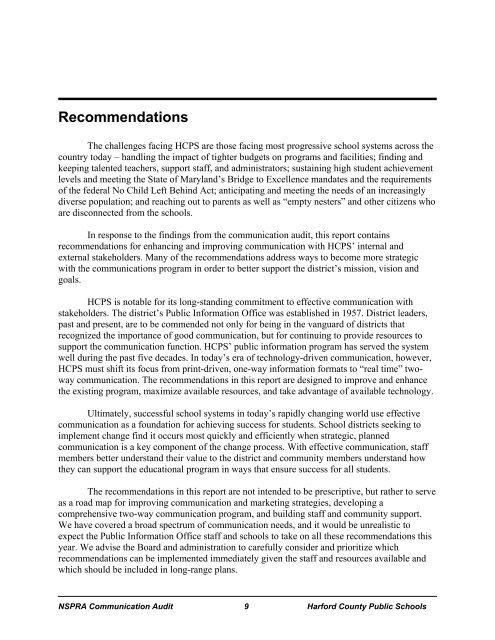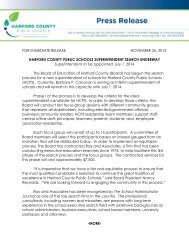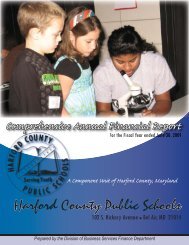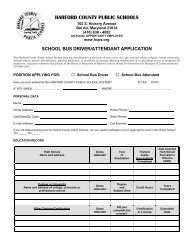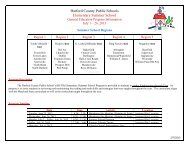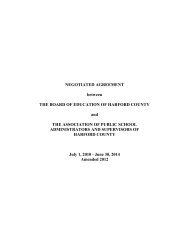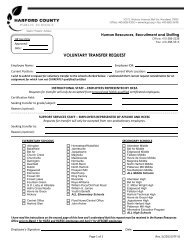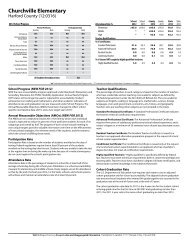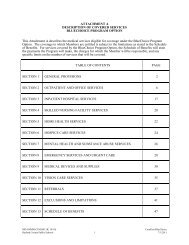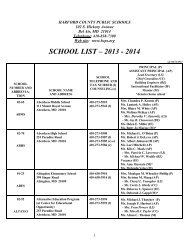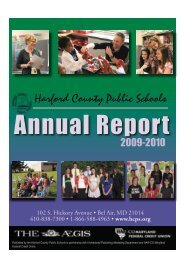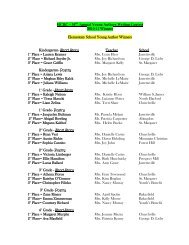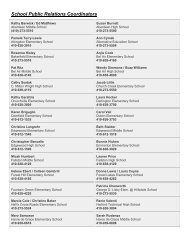NSPRA's Communication Audit Report - Harford County Public ...
NSPRA's Communication Audit Report - Harford County Public ...
NSPRA's Communication Audit Report - Harford County Public ...
You also want an ePaper? Increase the reach of your titles
YUMPU automatically turns print PDFs into web optimized ePapers that Google loves.
Recommendations<br />
The challenges facing HCPS are those facing most progressive school systems across the<br />
country today – handling the impact of tighter budgets on programs and facilities; finding and<br />
keeping talented teachers, support staff, and administrators; sustaining high student achievement<br />
levels and meeting the State of Maryland’s Bridge to Excellence mandates and the requirements<br />
of the federal No Child Left Behind Act; anticipating and meeting the needs of an increasingly<br />
diverse population; and reaching out to parents as well as “empty nesters” and other citizens who<br />
are disconnected from the schools.<br />
In response to the findings from the communication audit, this report contains<br />
recommendations for enhancing and improving communication with HCPS’ internal and<br />
external stakeholders. Many of the recommendations address ways to become more strategic<br />
with the communications program in order to better support the district’s mission, vision and<br />
goals.<br />
HCPS is notable for its long-standing commitment to effective communication with<br />
stakeholders. The district’s <strong>Public</strong> Information Office was established in 1957. District leaders,<br />
past and present, are to be commended not only for being in the vanguard of districts that<br />
recognized the importance of good communication, but for continuing to provide resources to<br />
support the communication function. HCPS’ public information program has served the system<br />
well during the past five decades. In today’s era of technology-driven communication, however,<br />
HCPS must shift its focus from print-driven, one-way information formats to “real time” twoway<br />
communication. The recommendations in this report are designed to improve and enhance<br />
the existing program, maximize available resources, and take advantage of available technology.<br />
Ultimately, successful school systems in today’s rapidly changing world use effective<br />
communication as a foundation for achieving success for students. School districts seeking to<br />
implement change find it occurs most quickly and efficiently when strategic, planned<br />
communication is a key component of the change process. With effective communication, staff<br />
members better understand their value to the district and community members understand how<br />
they can support the educational program in ways that ensure success for all students.<br />
The recommendations in this report are not intended to be prescriptive, but rather to serve<br />
as a road map for improving communication and marketing strategies, developing a<br />
comprehensive two-way communication program, and building staff and community support.<br />
We have covered a broad spectrum of communication needs, and it would be unrealistic to<br />
expect the <strong>Public</strong> Information Office staff and schools to take on all these recommendations this<br />
year. We advise the Board and administration to carefully consider and prioritize which<br />
recommendations can be implemented immediately given the staff and resources available and<br />
which should be included in long-range plans.<br />
NSPRA <strong>Communication</strong> <strong>Audit</strong> 9 <strong>Harford</strong> <strong>County</strong> <strong>Public</strong> Schools


